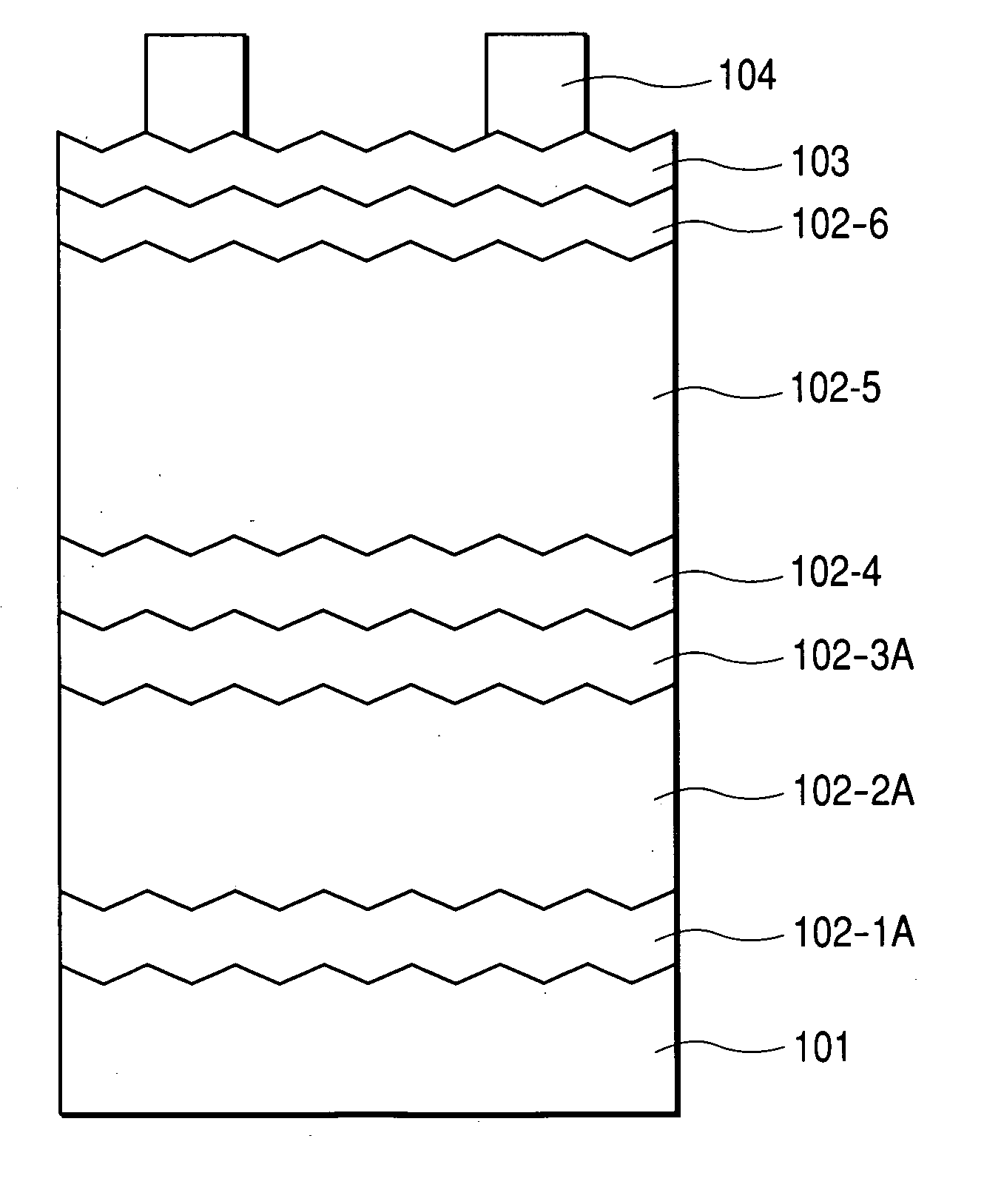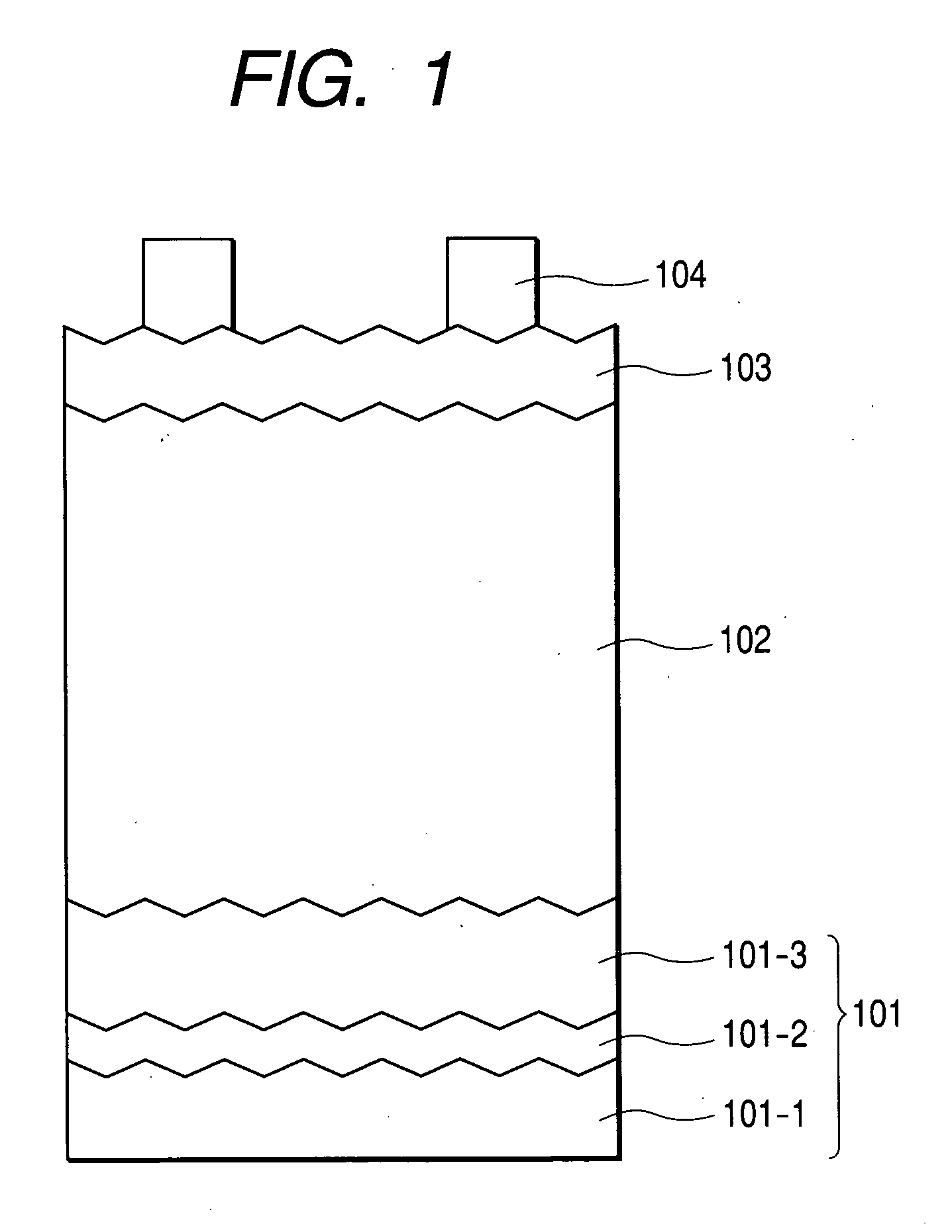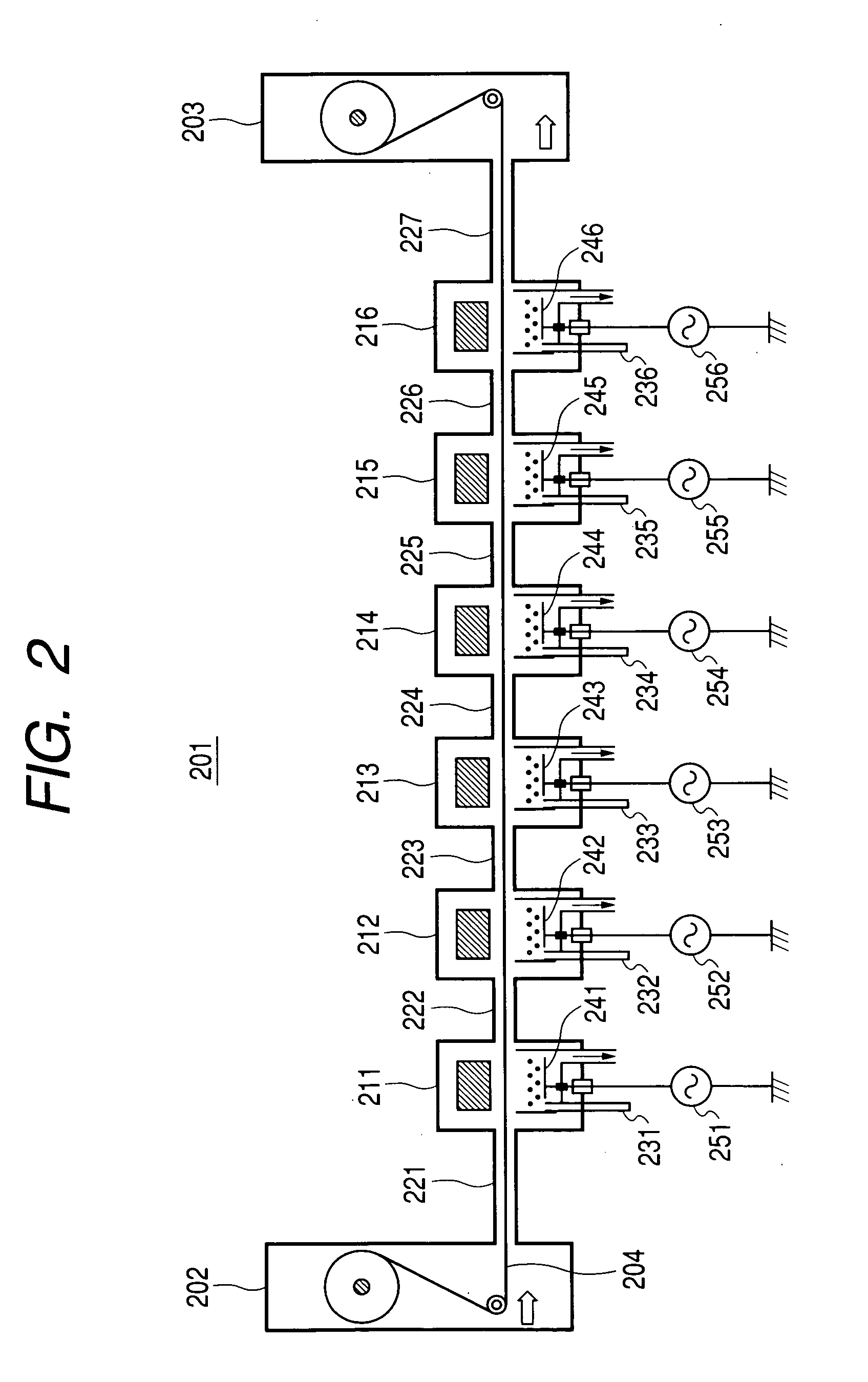Method of forming silicon-based thin film, silicon-based thin film, and photovoltaic element
a technology of silicon-based thin films and photovoltaic elements, which is applied in the direction of sustainable manufacturing/processing, polycrystalline material growth, and final product manufacturing, can solve the problems of limited batch type formation technique, and achieve the effects of short process cycle time, high film forming rate and excellent characteristics
- Summary
- Abstract
- Description
- Claims
- Application Information
AI Technical Summary
Benefits of technology
Problems solved by technology
Method used
Image
Examples
example 1
[0066] Using a deposited film forming apparatus 201 illustrated in FIG. 2, a photovoltaic element illustrated in FIG. 4 was produced by the following procedure. FIG. 4 is a schematic sectional view showing one example of a photovoltaic element comprising a silicon-based thin film of the present invention. In the figures, the same reference characters denotes the same members as in FIG. 1 and their descriptions are omitted. The semiconductor layer of the photovoltaic element was composed of an amorphous n-type semiconductor layer 102-1A, a microcrystalline i-type semiconductor layer 102-2A, and a microcrystalline p-type semiconductor layer 102-3A. That is, the photovoltaic element was so-called a pin-type single cell photovoltaic element.
[0067]FIG. 2 is a schematic sectional view showing one example of a deposited film forming apparatus for producing the silicon-based thin film and the photovoltaic element of the present invention. The deposited film forming apparatus 201 illustrate...
example 2
[0083] Using a deposited film forming apparatus 201 illustrated in FIG. 2, a photovoltaic element illustrated in FIG. 4 was produced by the following procedure. FIG. 4 is a schematic sectional view showing one example of a photovoltaic element comprising a silicon-based thin film of the present invention. In the figure, the same reference characters denote the same members as in FIG. 1, and their descriptions are omitted. The semiconductor layer of the photovoltaic element is composed of an amorphous n-type semiconductor layer 102-1A, a microcrystalline i-type semiconductor layer 102-2A, and a microcrystalline p-type semiconductor layer 102-3A. That is, the photovoltaic element is so-called a pin-type single cell photovoltaic element.
[0084] In the same manner as in Example 1, a belt-like conductive substrate 204 was produced and installed in a deposited film forming apparatus 201, and then the substrate wind-off vessel 202, the semiconductor formation vacuum vessels 211, 212, 213, ...
example 3
[0090] Using a deposited film forming apparatus 201 illustrated in FIG. 2, a photovoltaic element illustrated in FIG. 4 was produced by the following procedure. FIG. 4 is a schematic sectional view showing one example of a photovoltaic element comprising a silicon-based thin film of the present invention. In the figure, the same reference characters denote the same members as in FIG. 1, and their descriptions are omitted. The semiconductor layer of the photovoltaic element was composed of an amorphous n-type semiconductor layer 102-1A, a microcrystalline i-type semiconductor layer 102-2A, and a microcrystalline p-type semiconductor layer 102-3A. That is, the photovoltaic element was so-called a pin-type single cell photovoltaic element.
[0091] In the same manner as in Example 1, a belt-like conductive substrate 204 was formed and installed in a deposited film forming apparatus 201, and then the substrate wind-off vessel 202, the semiconductor formation vacuum vessels 211, 212, 213, ...
PUM
 Login to View More
Login to View More Abstract
Description
Claims
Application Information
 Login to View More
Login to View More - R&D
- Intellectual Property
- Life Sciences
- Materials
- Tech Scout
- Unparalleled Data Quality
- Higher Quality Content
- 60% Fewer Hallucinations
Browse by: Latest US Patents, China's latest patents, Technical Efficacy Thesaurus, Application Domain, Technology Topic, Popular Technical Reports.
© 2025 PatSnap. All rights reserved.Legal|Privacy policy|Modern Slavery Act Transparency Statement|Sitemap|About US| Contact US: help@patsnap.com



